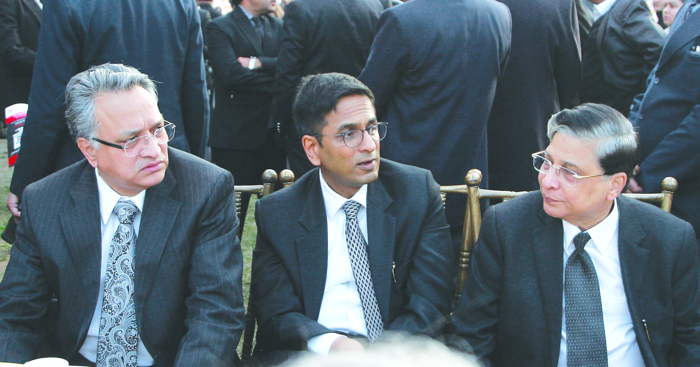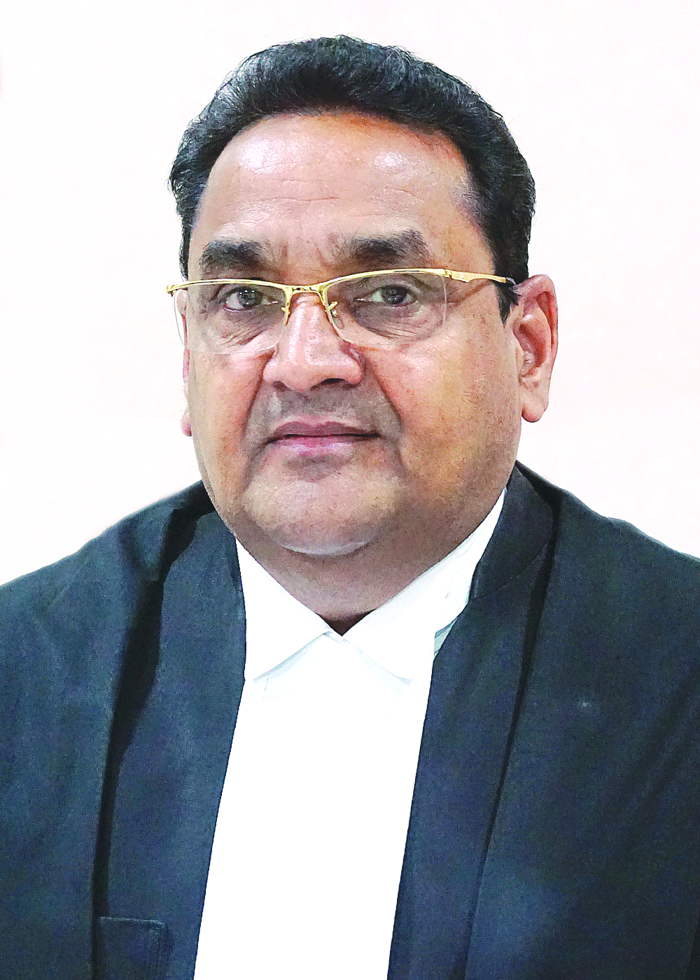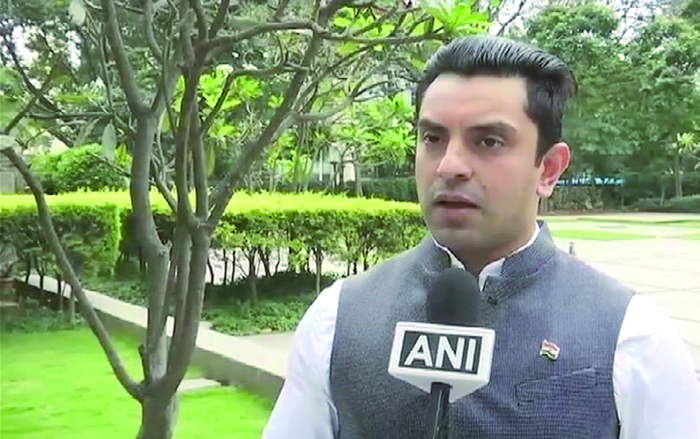Sheikh Naim was beaten to death on suspicion of being a child-lifter, in Seraikela-Kharsawa district of Jharkhand, in May 2017. Photo: Mid-day.com
Social media acting as a midwife has led to pervasive and irrational mob fury with the police being helpless. These responses are part of deeper changes in society where people are confronting the anxieties of development
~By Shiv Visvanathan
A few months back, at a philosophy seminar, a colleague and I were talking of the violence of mobs. He asked almost jokingly what would have happened if the inquisition was speeded up by the mobile phone and internet technology. Girolamo Savonarola, the grand inquisitor and Italian friar known for his prophecies, rather than being a failed witch-hunter would have made Joseph Stalin look weak and silly. Technology, my colleague felt, speeded up evil.
I had a different take on it. I was more interested in how the primordial and the technological, the most “primitive” and “advanced” domains resonate each other. I called this phenomena techno-fundamentalism, a process where the irrational in values combines with the efficiency of technology to create violence which is almost genocidal in intent. One used it to understand how the BJP combined communalism and faith in ancient beliefs with the latest of Silicon Valley technology. The same concept can highlight different phenomena like mob violence in India today.

Usually when one thinks of mob violence, one thinks of something barbaric, primordial and primitive. One visualises a rustic mob armed with weapons, impelled by irrational superstitions. But India, which is always famous for paradoxes, produces mob violence which is driven by internet and the mobile phone. The violence is then consumed through a selfie. This is a phenomenon that we need to understand.
States must stop lynchings: SC

A Supreme Court bench has said that states have the responsibility to check lynchings. “Whoever (the vigilantes) are, they can’t take the law into their hands. These kinds of incidents cannot occur. It can’t be accepted in the remotest sense,” said a bench headed by Chief Justice Dipak Misra (extreme right) along with Justices AM Khanwilkar (left) and http://www.indialegallive.com/top-news-of-the-day/analysis-updates/rampant-lynching…e-murderous-mobs-51342DY Chandrachud (centre). “It was the obligation of the states to ensure that such incidents do not occur,” said Justice Misra.“The states shall be held responsible.”
They were hearing a batch of petitions on violence by cow vigilantes.
Appearing for one of the petitioners, advocate Indira Jaising said these incidents “go beyond crime and law and order problems”. “We shall not confine these incidents to any particular motive. This is mob violence, which is a crime. The Centre should frame a scheme under Article 257 (Control of the Union over States in certain cases) of Constitution,” said the CJI. “There have to be preventive measures,” he added. The Court reserved its order and allowed the parties to file written submissions in three days.
Democracy believes it unfolds through the rationality of dialogue, discourse and institutions as anchored through citizenship and community. Yet, majoritarian democracy in India seems to be ruled by the mob. The mob sees itself as an extension of the regime and a substitute for civil society. The mob operates on suspicion and rumour. When rumour is oral and operates in a small-scale society, speed is not a necessity. But today, internet seems to rule the world of rumour. Technology amplifies the primordial, speeding up suspicion, accelerating the power of gossip. Gossip as rumour is now spread like gospel and this becomes the power of fake social messages. Rumour acquires a pandemic power and the lie becomes the new virus as it spirals into society. Such a message is lethal because it understands the vulnerabilities of society, plays on stereotypes and anxieties. There is little attempt at rational discourse. Every rumour leads to a witch-hunt, a pandemic of mob lynching which is almost surreal and macabre.
The print media presents the epidemic spread like a friendly colourful diagramme often done in green. The effort to report violence often has a touch of the slapstick. In the last few weeks, mob lynching triggered by rumours of child lifting or organ trade occurred in Tripura, Maharashtra, Karnataka, Tamil Nadu, Andhra Pradesh and Telangana. While the spread was awesome, the story was basically simple. A stranger is sighted, seen as suspect, an alarm is raised. Triggered by social media, a mob gathers which brutally lynches the victim. The focus is on migrant workers, strangers, visitors, anyone who cannot be taken for granted. I can see a time when people are suspect and lynched because they do not carry Aadhaar cards. Our sense of citizenship excludes a whole range of outsiders. This is deeply troubling in a society that is so essentially migrant in nature. Suspicion dominates hospitality in these liminal domains. The violence is sudden, irrational. For example, in Dhule, Maharashtra, it fell on five men who were migrant workers getting down from a bus. When one attempted to speak to a child, he was surrounded and interrogated by the villagers. Brutal beatings quickly followed the questions. A team of policeman took the injured men to the panchayat office, but the crowd broke it down, attacked the policeman and beat the five men to a brutal death. There is no place for reason, no time for conversation. The fake media message becomes a death sentence. All the victims were members of a nomadic tribe, which moved from village to village seeking alms. The now sedentary citizen armed with a mobile sees anyone who is transient, nomadic as suspect. What is startling in each case is the speed of rumour and the brutality of violence. Police are almost helpless on these occasions. It is as if the fake message on the mobile phone is the new legislator. Its diktats are supreme.
Spreading Poison
At least 28 people have been lynched since May 2018 amid rumours circulated on social media. The rumours alleged that child-lifters were on the prowl. Shockingly, these heinous incidents have erupted over a wide swathe of India. Some of the recent incidents are:
May 9: An elderly woman tourist was lynched in Tiruvannamalai, Tamil Nadu, on suspicion of being a child-lifter after she was found handing out chocolates to children.
May 12: Two people were lynched in Jadugora, Jharkhand, on the same suspicion.
May 17: One Muslim man was lynched in Satna, MP, on suspicion of engaging in cow slaughter.
May 20: A man was lynched in Vishakhapatnam on suspicion of being a child-lifter.
May 22: Two people were lynched in separate incidents in Telangana on suspicions of being child-lifters.
May 23: A man from Rajasthan was tied to a vehicle and dragged on a road in Bengaluru on suspicion of being a child lifter. People beat him with sticks till he succumbed to his injuries.
May 26: A transwoman was lynched in Hyderabad.
June 8: Two tourists were lynched in Karbi Anglong, Assam.
June 8: Two men were lynched in Aurangabad on suspicion of being robbers.
June 13: Two Muslims were lynched in Godda, Jharkhand, over suspicion of cattle theft.
June 22: A scholar from Bengaluru, pursing research in Sarguja, Chhattisgarh, was lynched on suspicion of being a child-lifter.
June 26: Five men from the nomadic Gosavi tribe were lynched in Dhule, Maharashtra, on suspicion of being child-lifters.
June 26: A man was lynched in Singrauli, MP.
June 26: A woman was lynched in Ahmedabad, Gujarat (see above).
June 28: Three separate lynchings occurred in Tripura on the same day. A man who was part of a team set up by the state government to campaign against rumour-mongering was lynched in Kalachhara, south Tripura. In another incident, a hawker from UP was lynched in Murabari, west Tripura, on suspicion of being a child-lifter and a woman was lynched in Bishalgarh, Sipahijala.
The government seems feeble and pathetic. One of the most ironic stories comes from Agartala, where a modern town crier hired by the government to dispel these rumours was brutally lynched along with his two companions. Sukanta Chakraborty, 33, had to move from village to village playing the modern town crier with a difference. He had moved around not announcing news but dispelling false news. The poor loudspeaker was no match for the power of the internet.
One senses that digital violence cannot be handled the way old law and order problems are treated. One needs speed. Merely suspending internet only grants a temporary intermission. The internet-inspired mob in its bestiality cannot be controlled by an appeal to rationality and civics. In fact, the first suspects are government officials. There is a breakdown of trust in the system. Geographical mobility increases suspicion and internet accelerates that suspicion, pronouncing death sentences long before the forces of law and order come awake. In this technologically amplified world, police look like Kip Van Winkles at total loss.
No mob can take the law into its hands
 Under the law, the right to private defence is only given to people who are attacked; otherwise nobody has the right to take the law into own hands for protecting the cow or any other human being. On June 23, 2018, the UP State Law Commission had submitted a report to the chief minister on cow protection. One of the important provisions mentioned in the report was that if there is a doubt about whether the meat seized from someone is beef, then until reports arrive from a chemical laboratory, the concerned person cannot be arrested.
Under the law, the right to private defence is only given to people who are attacked; otherwise nobody has the right to take the law into own hands for protecting the cow or any other human being. On June 23, 2018, the UP State Law Commission had submitted a report to the chief minister on cow protection. One of the important provisions mentioned in the report was that if there is a doubt about whether the meat seized from someone is beef, then until reports arrive from a chemical laboratory, the concerned person cannot be arrested.
No social, religious or political protection should be given to those lynching others because we live under the rule of law and not under the rule of mobocracy. Therefore, no mob has the right to take the law into its hands. Strict action should be taken within the laws already in place. Nobody has the right to justify these acts, only the judiciary is entitled to look into the matter. No person should try to become the judge himself.
When anybody dies in protests and demonstrations, the government gives them compensation out of the taxpayer’s money. I object to it and the Supreme Court has also said that the person, community or political party responsible for the damage should be made liable to compensate for it. Neither the central nor state governments have the right to waste taxpayers’ money.
—Justice AN Mittal, chairman, Uttar Pradesh Law Commission
The mob in India operates at two levels. It amplifies the authoritarian power of the majority, especially against the minority. It also envelops the mob in its vulnerability and anxiety about strangers, aliens, outsiders and triggering a bestial violence. At both ends of the spectrum, the internet plays the midwife’s role creating an orgy of violence. There is little follow-up in terms of justice, narrative or a return to normalcy. When the mob becomes the self-styled instrument of justice, law and order can do little. The story fades away in a few weeks till the spectre of fake messages strikes again. Democracy has few answers to this trickster of technology claiming innocent lives by the dozen. There is a fatalism about such events which is frightening.

The description and analysis so far has been overt, done in terms of social science indicators. We have described the brutality of violence, we have mentioned that it targets strangers entering localities, we have shown the anxieties focus around organ trade and child-lifting. It is more a mapping, a morphology, specific and concrete. There is little that is speculative about it. It is more like a census of violence than a collection of hypothesis. One realises that what we are confronted with is a set of symptoms, responses to deeper changes occurring in society. I think one is confronting the anxieties of development. We frankly secularise these processes in terms of the economics of income and employment. But what we cannot conjecture is that development is not always successful. It creates a whole wave of anxieties for which there are no coping mechanisms. There are anxieties about the stranger, unstated fear of huge migration that make a sense of citizenship tentative. We lack the language, the myth by which we can handle change.
Is this a democracy or a mobocracy?
One of the prayers in my petition was that if lynchings are taking place in the name of cow slaughter, then let the government ban beef trade in the entire country. It is unfortunate that the ones who had opposed this were the states of Goa, Arunachal Pradesh, Manipur, and Mizoram. You can see which is the ruling party in these states.
Although the petition had started with lynchings in the name of the cow, it also includes other incidents such as the two persons being lynched in Assam on a WhatsApp rumour. Even the five people killed in Maharashtra were not Muslims, they were Hindus killed because of a rumour. In Delhi, a young man named Ravindra was lynched. Ravindra was a fan of Modi and the Swachh Bharat Abhiyan. The mob killed him because he stopped some people from urinating in public and simply told them to use public toilets instead.
The question is whether we should be a democracy or a mobocracy? While hearing my petition, the chief justice said that this cannot be accepted in any democracy. He had issued notices to states, but they did not abide by it. Now I have given suggestions to the Supreme Court. One of the suggestions made in the petition is that the nodal officer appointed in every district will report to the SP and the chargesheet will be filed within three months. This time period is kept because otherwise the accused becomes a victim and the victim is shown as the accused. State governments have been running away from their responsibilities. This is not a Hindu-Muslim issue but of humanity.
—Tehseen Poonawalla, petitioner in a case against cow vigilantism
If one looks around there are only two groups telling us how to handle change—managers and religious gurus. Both spend a lot of time talking about success or how to overcome difficulties. There is very little discussion about failure, threat, anxiety or fear. There are few myths and psychologies about how to cope with them. In fact, there is paucity of recipes of how to cope with change. As an aside, think of the number of self-help books that Indians buy to cope with social change. Our Constitution and our ideas of law and order does not create a network of trust or fables of meaning that change requires. This makes violence and the mob the two umbilical words giving us temporary protection against change. When we lack a civics of change, we revert to rumour. Caricature rumour has great currency in such society. Violence becomes an act of catharsis providing a sense of control. Social Scientists have to think beyond knee-jerk ideas of policy and policing and help create new life giving myth which can enter folklore and help digest change. Till then, the force of digital change is going to create the inevitability of violence. Law needs a new social imagination to cope with change. Otherwise, we will return to the barbaric and the bestial. The violence one sees is an early warning system of the disaster to come.
—The writer is an academic associated with the Compost Heap,
a group in pursuit of alternative ideas and imagination




